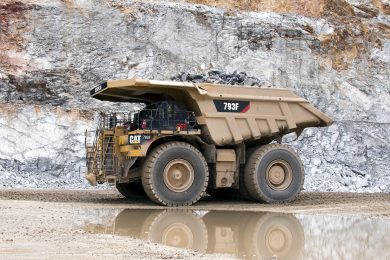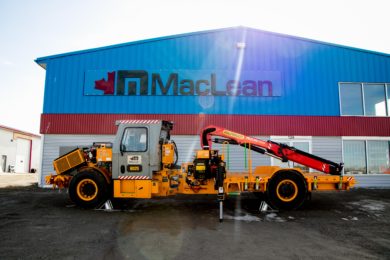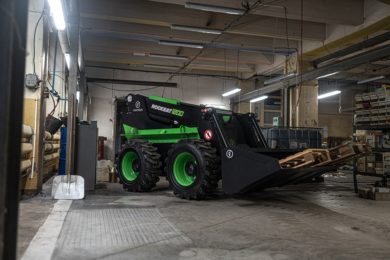In extensive testing and field validation trials, the Cat® Tier 4 Final 793F mining truck has proven it equals performance of the 793F configured to meet Tier 2 emission standards, and it burns less diesel fuel than the Tier 2 model. The 793F, the market leader in the 227 t size class, is available to meet US EPA Tier 4 Final emission standards in the United States and Canada.
The Tier 4 Final 793F successfully completed field validation, with all of the pilot machines exceeding requirements. Two of the pilot trucks accumulated more than 7,600 operating hours in their first year in the field. The trucks were put to the test in a variety of applications, including cold ambient temperatures, high ambient temperatures, uphill hauls and flat hauls. All of the trucks integrated seamlessly into the mining systems as customers reported excellent performance and reliability.
At an iron mine, Caterpillar conducted a rigorous performance study on a Tier 4 Final 793F and measured no loss in performance or productivity compared to the Tier 2 793F trucks working on the same site. In addition, the machine demonstrated up to 5.3% less diesel fuel burn over the haul cycle. As a result of a reduction in diesel fuel consumption, the Tier 4 Final 793F pilot machines demonstrated lower total cost of ownership (TCO) relative to the Tier 2 793F.
The Tier 4 Final 793F uses the Cat C175-16 engine, proven in previous 793F models. The truck in Tier 4 configuration is equipped with a selective catalytic reduction (SCR) system, which uses diesel exhaust fluid. Caterpillar selected the SCR solution because it provides the most robust and reliable means to meet Tier 4 Final emission standards while delivering equivalent engine performance. The modular SCR design, which was adopted from other Cat production products, minimised new content and design changes to the proven Tier 2 793F.
As of September 1, 2017, the Tier 4 Final 793F machines have achieved a combined 30,500 hours of field validation operation, and they continue to work reliably and productively.










